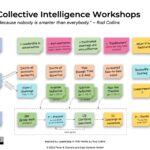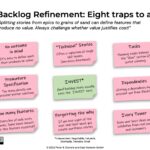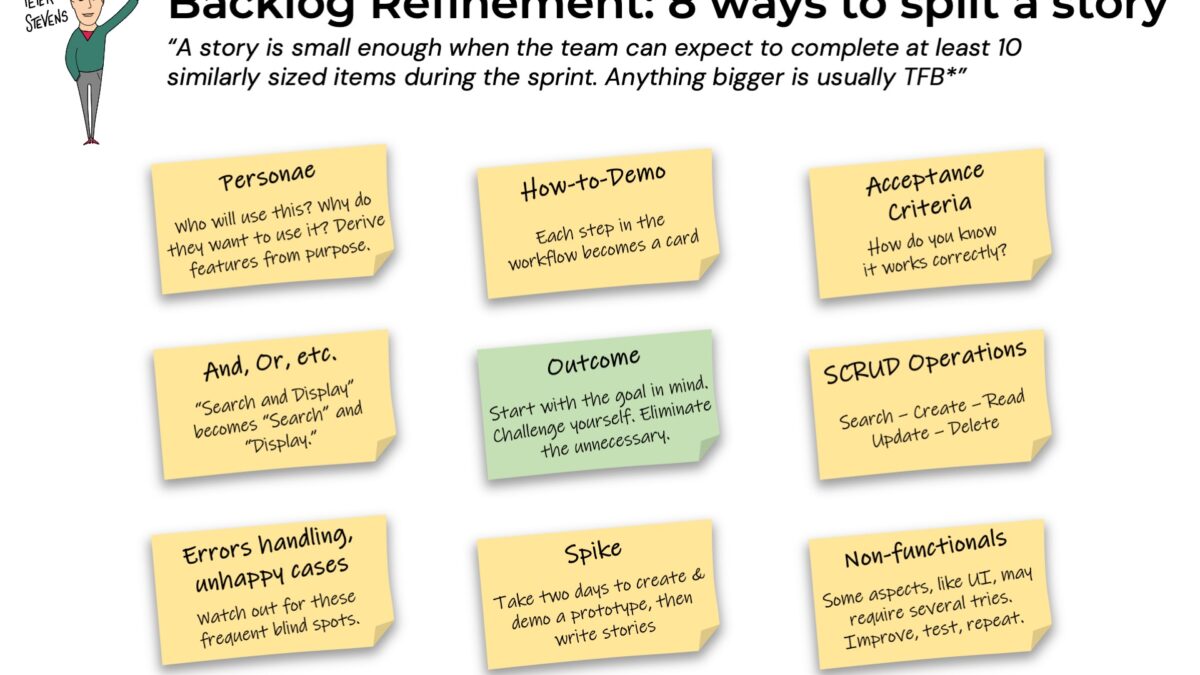
Collective Intelligence Workshops
02-10-2023
Backlog Refinement: Eight Traps to Avoid
05-10-2023Imagine your agile teams speeding through the backlog and creating applications that positively impact your business. The key is backlog refinement, and here my latest info-graphic with eight proven approaches and a focal point for more valuable applications.

Backlog Items, aka Stories, are small enough when the team can expect to complete at least 10 similarly sized items during the sprint. That’s the sweet spot, where efficiency soars, and progress accelerates, and even flexibility during the sprint is available. Bigger stories usually spell trouble; just call them TFB (Too something big. That F is for you to figure out!)
But how do you break down those monolithic stories into manageable pieces? It all begins with understanding who will use it and why. In this article, we dive into the essential questions that underpin agile success, focusing on intrinsic motivations and workflow simplification.
Focal point: Outcome
Start with the outcome in mind! This is the focal point of your activities. Which user and which features will enable that outcome? Identify the essentials and focus on those aspects first.
Personae
Who was going to use it? Why do they want to use it? These are the intrinsic motivations for using the feature. Split on Personae, then split on their goals, then talk about what features each person needs to achieve their goals.
How to demo
Explain the workflow to demonstrate the product. If your backlog item is an epic, this will identify the main features of the product. If it is already a feature, the workflow will be useful to confirm with stakeholders, both before and after implementation, that you have a correct understanding of the story. The individual items of a card may become “grain of sand” level items that you can take into a sprint.
Acceptance criteria
How do you know that it works correctly? For integration projects, that may be all you have.
And, Or, etc.
“Search and Display” becomes “Search” and “Display” as separate items. Convert “et cetera” into explicit list.
SCRUD Operations
Search, create, read, update, and delete are the basic operations on an object, like want-ad.
Error Handling and Unhappy Cases
These are frequent blind spots.
Spike
If have a lot of open questions, taking a maximum of two days to create and demonstrate a prototype can be very helpful. This is called a spike. Demonstrate the version then write the stories.
Non-functional
Things like performance, user interface, and SEO are hard to get right on the first try. They may require several attempts. Improve, test and repeat!
‼️ Watch for traps!
Probably the biggest danger of working on an established product is becoming a feature factory. You produce features that no one care about. Start with the outcome in mind and eliminate unnecessary features before you implement them!
In my next article, I’m going to look at traps to watch out for.





